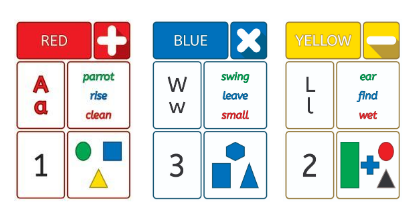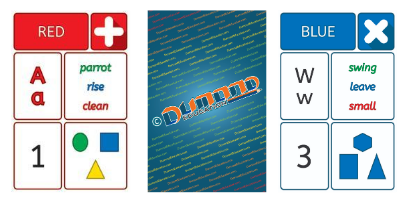CardEd, Mathematics
Numeral Identification and Ordering with CardEd
I promised to discuss using CardEd for ordering and sequencing, but there are a few developmental steps to consider first. These milestones contribute to a child’s overall ‘Number Sense’ – a topic we will examine in greater detail in coming posts – and are necessary foundations for mathematical learning.
Having some understanding of early mathematical stages can guide us when we are working with children and ensure we are setting developmentally-appropriate challenges for them.
Number Recitation
A child’s early attempts at ‘counting’ are usually greeted with great excitement. At this stage, a child is simply chanting a number sequence (reciting the numbers starting from 1), with no meaning attached, rather than counting per se. It is still massively exciting and a huge leap into the world of mathematics. As children become more familiar with the count sequence, they can say it backwards. Later they will be able to start from numbers other than one and count in various multiples.
Once children have mastered a basic count sequence, the next step is being able to state the number word after e.g. the child will say 3 when asked “What comes after 2?”. Children must be able to do this without having to count from 1 to establish their answer. Further progress involves being able to name the number word before, again without needing to count from 1. Thus the count sequence begins to have meaning.
The next steps (which may begin occurring simultaneously) are moving from rote counting (recitation of the sequence) to counting. In this case, counting is taken to involve some challenge or problem e.g. finding the total number of objects in a set or solving an addition sum. Children will need lots of practise with various manipulatives to master this skill.
Numeral Identification
Another concept children must master is numeral identification. This involves being able to match numerals to the oral sequence and recognise a number by its numeral.
Use CardEd to support numeral identification in 2 ways.
- Lay some CardEd cards face up on the table and ask the child to find certain numerals. “Can you find? / Show me / Where is? etc.”
- Point to a CardEd numeral and ask the child to name it.

Once children are confident in recognising individual numerals, they can begin to practise laying them in order.
Ordering Numerals
Here are some suggestions for using CardEd to support children to order numerals. Remember to gradually build up the amount of cards and numerals they are working with.
Lay CardEd cards on the table e.g. 1, 2, 3 and ask the child to read the numbers.

Have the child close their eyes and mix up the sequence. Can they put it back together?

Have the child close their eyes again and this time turn one of the cards over. Can the child say what number has been turned over?

Check whether the child is counting from 1 to figure these out or can do so automatically.
Extension activities include:
- Sorting more cards and creating longer sequences;
- Ordering sequences starting from a number other than 1;
- Counting backwards and ordering numerals from largest to smallest;
- Ordering sequences with missing numbers and identifying what is missing;
- Ordering non count-by-1 sequences e.g. counting by 2 and placing those cards down.
As we delve into the topic of Number Sense, we will examine lots of ways to use CardEd and other resources to support children’s mathematical development. Be sure to sign up to the blog for teaching tips and ideas.
